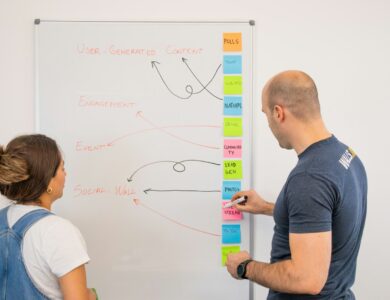
Introduction:
In every learning environment, there comes a moment when someone wants to give up. Whether it’s due to a low grade, a confusing concept, or a fear of failure, learners often hit mental roadblocks. This is where the power of the growth mindset can transform outcomes. Coined by psychologist Carol Dweck, a growth mindset is the belief that intelligence and ability are not fixed traits but can be developed through effort, feedback, and perseverance. It changes the question from “Can I do this?” to “How can I get better at this?”
The Growth Mindset vs. Fixed Mindset:
Learners with a fixed mindset believe their intelligence and talents are static. They avoid challenges, give up easily, and feel threatened by the success of others. In contrast, growth-minded learners embrace difficulty, persist through setbacks, and see mistakes as part of the learning process.
This shift in perspective profoundly affects behavior, motivation, and achievement. It helps learners reframe failure, build resilience, and maintain long-term engagement.
How Educators Foster a Growth Mindset:
- Praise the Process, Not the Person:
Instead of saying “You’re a natural at this,” try “I can see how much effort you put into this.” Praise should highlight strategies, effort, and improvement. This encourages learners to value hard work and persistence over innate talent. - Normalize Mistakes:
Make it clear that errors are not signs of incompetence—they’re signs of learning. Publicly analyzing common mistakes, sharing stories of personal failure, or having a “favorite mistake of the day” fosters psychological safety. - Use “Not Yet” Language:
Language is powerful. When a learner says, “I don’t understand,” help them reframe it as “I don’t understand this yet.” The word yet implies progress is possible and ongoing. - Provide Actionable Feedback:
Feedback should be focused on improvement, not judgment. Comments like “Try explaining this idea using an example” or “Next time, structure your argument more clearly” provide learners with direction. - Encourage Reflection:
Ask learners to reflect on what helped them improve. Prompts like “What strategy worked best for you?” or “What challenge did you overcome?” help them internalize the growth mindset.
Growth Mindset in Group Work:
When learners collaborate, mindset matters. Teams with a growth mindset tackle problems together, give constructive feedback, and celebrate shared progress. Educators can support this by assigning group reflection tasks or role rotation to build multiple skills.
Visualizing Growth:
Progress tracking tools—such as skill charts, milestone boards, or digital learning portfolios—help learners visualize growth over time. When they see their trajectory, motivation increases.
Barriers to Growth Mindset:
Sometimes learners resist this mindset. They may have internalized fixed beliefs from early education or social expectations. Overcoming this requires consistency, encouragement, and modeling by instructors.
It’s also important to recognize that a growth mindset is not about blind optimism. It doesn’t ignore difficulty or promise guaranteed success. Instead, it cultivates a realistic belief that ability can improve with effort and the right strategies.
Conclusion:
The growth mindset is not a trend—it’s a fundamental shift in how we view potential. When learners understand that challenges are opportunities, that effort leads to mastery, and that feedback is a gift, they become more confident and resilient. Educators who embed this philosophy into their teaching not only increase achievement—they shape learners who thrive far beyond the classroom.




